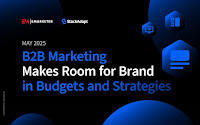 |
| Source: Shutterstock |
The latest salvo of criticism aimed at the venerable 4Ps of marketing was fired by Joanne Seddon, the CEO of the Marketing Accountability Standards Board, in an article published last month at WARC.
Ms. Seddon pulled no punches in her criticism. She wrote that the 4Ps are "hopelessly out of date," don't "truly reflect the basic principles of marketing," and are "wrong. Or, at the very least, dangerously incomplete." Therefore, she argued, the attempt by some to revive the use of the 4Ps, while "well meant," is "misguided."
Beyond these broad condemnations, Ms. Seddon offered five specific criticisms of the 4Ps in her article. In my view, these criticisms are largely unfounded because they are based on an inaccurate understanding of the 4Ps model.
The 4Ps model of the marketing mix was developed by E. Jerome McCarthy, a marketing professor at Notre Dame. McCarthy introduced the model in his 1960 marketing textbook, Basic Marketing: A Managerial Approach (Richard D. Irwin, Inc., 1960) ("Basic Marketing").
As the developer of the 4Ps model, McCarthy is the authoritative source of information about what the 4Ps encompass and how they should be applied, and his textbook provides a detailed description of the model as he originally designed it. So, in the balance of this post, I'll address Ms. Seddon's specific criticisms of the 4Ps using material drawn from Basic Marketing.
"The 4Ps Are Tactical, Not Strategic"
In reality, the 4Ps model is more strategic than tactical. McCarthy's extensive discussion of product, place, promotion, and price (Sections C - F in Basic Marketing) highlights the many strategic business issues that marketing managers must address when developing a marketing mix.
The following passage illustrates McCarthy's view of marketing's role in strategic decision-making:
"Are the activities of product development, product design, packaging, credits and collections, transportation, warehousing, and price setting included in 'marketing?' There is little doubt that personal selling and advertising are marketing activities, but many business executives would have marketing stop there. . . We must reject this view of marketing.
". . . Marketing should start with the customer, not with the plant. Thus, marketing should determine what products are to be produced . . . what prices to charge . . . and where they are to be available . . . - as well as selling and advertising." (Basic Marketing, p. 34)
The 4Ps Are "Purely Product-Focused" and "Miss Out" the Customer
McCarthy clearly states that marketing starts with the customer numerous times in Basic Marketing. It's noteworthy that he devoted 171 pages in his textbook to explaining the importance of choosing a target market and understanding the needs, preferences, and buying behaviors of potential customers before he began his detailed discussion of the 4Ps.
McCarthy's view of the centrality of the customer is evidenced by the following diagram, which appears on page 45 of Basic Marketing.
The "C" in the center of the above diagram stands for "consumer," and the diagram illustrates that all decisions regarding the 4Ps are centered on the customer.
The 4Ps Assume a "Static, Unchanging Marketplace"
This criticism is also unfounded. Near the end of Basic Marketing, McCarthy directly addressed the issue of changing conditions. He wrote:
"A 'best' solution can hardly remain 'best' for long . . . We are dealing, too, with a great range of ever-changing variables, and the movement of any one may change the final result. That makes our 'best' solution obsolete immediately. The marketing manager, then, must . . . make appropriate changes in his marketing mix. And this is a continuing process. He is continually analyzing, measuring, evaluating, and changing. (Basic Marketing, p. 671)
The 4Ps Don't "Touch on the Purpose of Marketing, Which Is to Drive Revenue, Profit, and Financial Value"
This criticism is accurate in the sense that McCarthy doesn't specifically address the measurement of marketing performance as a distinct topic. This shouldn't be surprising given how he sees the role of marketing in a business.
McCarthy defines marketing as follows:
"Marketing is the performance of business activities that direct the flow of goods and services from producer to consumer or user in order to satisfy consumers and accomplish the firm's objectives." (Basic Marketing, p. 33)
In McCarthy's view, marketing plays a leading role in most aspects of a company's business operations. Therefore, the effectiveness of the marketing strategy will be reflected in the overall company performance.
"The 4Ps Miss Out Brand!"
Ms. Seddon's final criticism is that the 4Ps model omits brand. In fact, McCarthy discusses branding in both the "Product" and the "Promotion" sections of his textbook.
It is fair to say that McCarthy's treatment of brand focuses on fundamentals, what we might expect to see in an introductory brand management textbook.
It's also fair to say that McCarthy, unlike today's brand marketing advocates, doesn't discuss the shortcomings of performance marketing, the pitfalls of "short-termism" in marketing, or how a strong brand affects the psychological aspects of buyer decision-making.
But, it's simply wrong to say the 4Ps omit brand.
Are the 4Ps Outdated?
Like any textbook, Basic Marketing reflects the state of knowledge about its topic that existed when it was written. So, there are aspects of Basic Marketing that are now outdated. To address this issue, popular textbooks are typically updated regularly, and Basic Marketing is no exception. The book is now in its 19th edition.
The 4Ps model itself is not outdated if it is properly understood and used, and most criticisms of the model are simply way overdone.






















